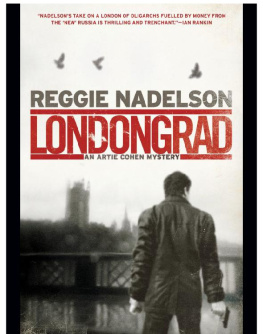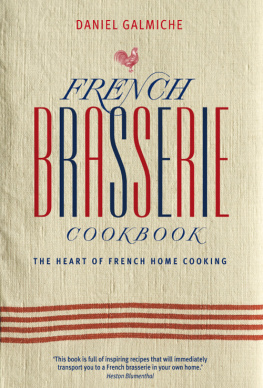We hope you enjoyed reading this Simon & Schuster ebook.
Get a FREE ebook when you join our mailing list. Plus, get updates on new releases, deals, recommended reads, and more from Simon & Schuster. Click below to sign up and see terms and conditions.
CLICK HERE TO SIGN UP
Already a subscriber? Provide your email again so we can register this ebook and send you more of what you like to read. You will continue to receive exclusive offers in your inbox.
Thank you for downloading this Simon & Schuster ebook.
Get a FREE ebook when you join our mailing list. Plus, get updates on new releases, deals, recommended reads, and more from Simon & Schuster. Click below to sign up and see terms and conditions.
CLICK HERE TO SIGN UP
Already a subscriber? Provide your email again so we can register this ebook and send you more of what you like to read. You will continue to receive exclusive offers in your inbox.

Gallery Books
An Imprint of Simon & Schuster, Inc.
1230 Avenue of the Americas
New York, NY 10020
www.SimonandSchuster.com
Copyright 2017 by Reggie Nadelson
All rights reserved, including the right to reproduce this book or portions thereof in any form whatsoever. For information, address Gallery Books Subsidiary Rights Department, 1230 Avenue of the Americas, New York, NY 10020.
First Gallery Books hardcover edition April 2017
GALLERY BOOKS and colophon are registered trademarks of Simon & Schuster, Inc.
For information about special discounts for bulk purchases, please contact Simon & Schuster Special Sales at 1-866-506-1949 or .
The Simon & Schuster Speakers Bureau can bring authors to your live event. For more information or to book an event, contact the Simon & Schuster Speakers Bureau at 1-866-248-3049 or visit our website at www.simonspeakers.com.
Interior design by Matteo Bologna
Jacket design by Mucca Design
Jacket photograph by Peter Nelson
Library of Congress Cataloging-in-Publication Data
Names: Nadelson, Reggie, author. | McBride, Shane, writer of supplementary text.
Title: At Balthazar : the New York brasserie at the center of the world / Reggie Nadelson ; with new recipes by Balthazar executive chef Shane McBride ; photographs by Peter Nelson.
Description: New York : Gallery Books, [2017]
Identifiers: LCCN 2016024701| ISBN 9781501116773 (hardcover : alk. paper) | ISBN 9781501116780 (pbk. : alk. paper)
Subjects: LCSH: Balthazar (Restaurant : New York, N.Y.) | Cooking, French. | LCGFT: Cookbooks.
Classification: LCC TX945.5.B35 N33 2017 | DDC 641/5944dc23
LC record available at https://lccn.loc.gov/2016024701
ISBN 978-1-5011-1677-3
ISBN 978-1-5011-1679-7 (ebook)
 TO DICK ROBINSON
TO DICK ROBINSON 
Thanks
Half a dozen years ago, I first approached Keith McNally about doing a book. The owner of Balthazar, Keith would always rather talk about the theater or cast-iron architecture or Soviet Constructivism than about his restaurant or himself, but in 2014 we met for coffee. He mentioned that he was a fan of English history. I said I was pretty good on the subject.
Keith smiled and said, Who was the first Tudor king?
I fell for it. Henry VIII, of course, I said.
Henry VII, said Keith. Do your book.
He promised complete access to whatever I needed. He more than kept his word. He never interfered, not once, though occasionally when Id run into him, winding me up a little, hed say, Arent you done yet? What are you writing?
* * *
Give me such showsgive me the streets of Manhattan!
Walt Whitman
Contents
RECIPES:
RECIPES:
RECIPES:
RECIPES:
RECIPES:

Breakfast at Balthazar
W hen I was a kid growing up in Greenwich Village in the 1950s, we sometimes ate out at Longchamps on Twelfth Street and Fifth Avenue, a couple of blocks from where we lived. I loved eating out. I loved restaurants. Longchamps was pink, it had natty Art Deco furniture, and it was French. There was French onion soup au gratin and a matre d in a tux. His name was Mr. Naigish.
There were years when we had Thanksgiving at Longchamps. This gave my father quite a bit of pleasure. He invited the family. He paid. My pop, who wore bow ties and drank martinis, sometimes ordered wine as well. Im sure it both impressed and pissed off his brothersmy uncles were rye-drinking kind of men, rye in the old sense, not rye made by hipsters in little hatswho had to trek in from Flatbush, from ancestral Brooklyn.
Whats more, Mr. Naigish addressed my parents by name. This was my first inkling that to be a regular, to be known at a neighborhood restaurant, even regarded as friends, made you special. Over at the Steak Joint on Greenwich Avenue, Dan Stampler called my parents Sally and Sam. This was the thing I was crazy about, this feeling you were an insider in a singular little society.
I was a fat, smart, nosy little girl, and God knows I liked the food, but I loved the people: the uptown crowd in suits and minks, slumming in the Village; local families out for spaghetti and meatballs; the artists, writers, and musicians arguing at coffee shops over immense slabs of pie and coffee. Even more interesting were the people who worked at restaurants, out front or behind the scenes: the singing waiters at Astis on Twelfth Street; the occasional real Frenchman at Charles French Restaurant; the one-armed waiter at Franks Pizzeria on Bleecker Street, his empty shirt sleeve pinned back, who tossed the pies with the brio of a juggler on The Ed Sullivan Show .
Then there were the waitresses at Schraffts where my mother took me on special occasions for ham and Swiss on toasted cheese bread served by these plain Irish girls in hairnets and black uniforms. Some of them had been hired just off the boats, my mother said. It sounded like a kind of spooky religious order. I longed to ask about their lives, these women far away from home. Where did they live? Who were they?
At the Coach Houseit was located in an actual old coaching house on Waverly Placeblack waiters in white gloves served dinner. The idea was that you were dining on all-American food in some theme park little version of another age, perhaps down south. It was unusual, too, in a city where if you went out to eat you generally ate French or Italian or maybe blintzes at Ratners. The fried chicken, the corn bread made in special black iron molds, and the black bean soup were all delicious. The owner, Mr. Leon Lianides, was imposing and, unless you were quite famous, a little intimidating. Still, everyone else was very nice, very gracious. I always wondered, though, if after they finished work, when the waiters took off their white gloves, they also retired their smiles for the night.
* * *
Longchamps, the Steak Joint, Charles, the Grand Ticino, the Cookery, the Sea Fare, all gone now. My parents are gone; the restaurants, gone. The bars, too. Bradleys, the Cedar on University Place, where Jack Kerouac, it was said, pissed in the ashtray. As kids, we went trick-or-treating at the Cedar because instead of candy, you always got cash.
What I took with me from childhood was that sense of a different world where you might be admitted or at least given a glimpse. Anytime a matre d hugged me or a waiter called out my name or a bartender offered me one on the house, I felt I was in; I had arrived.
Next page









 TO DICK ROBINSON
TO DICK ROBINSON 
